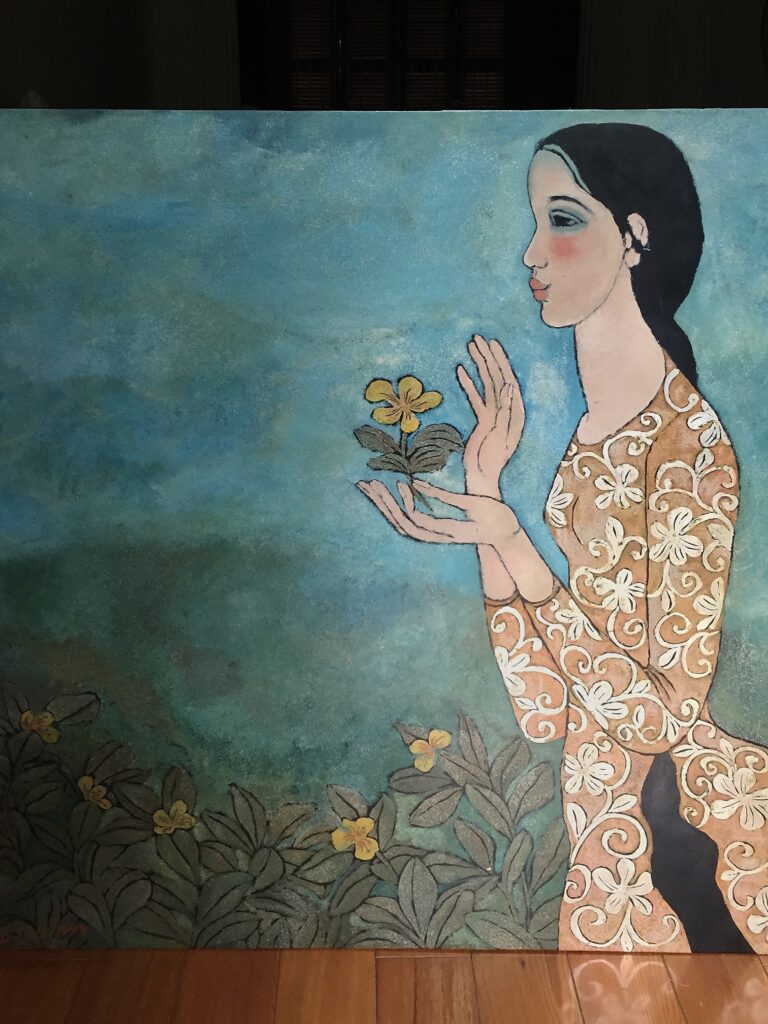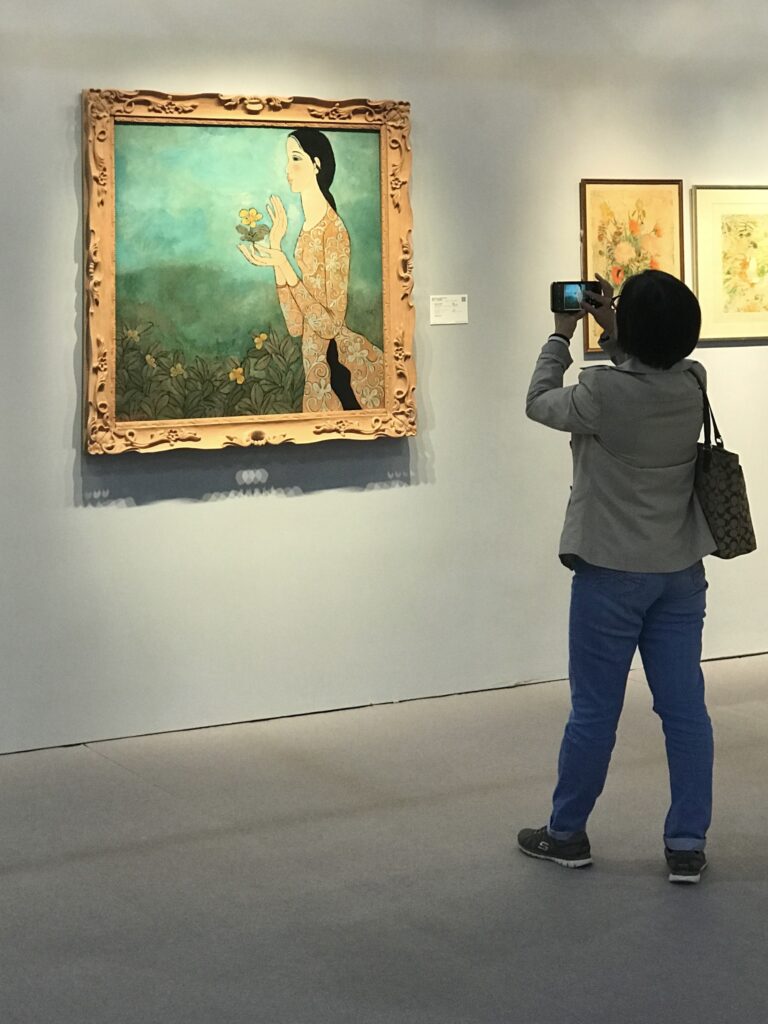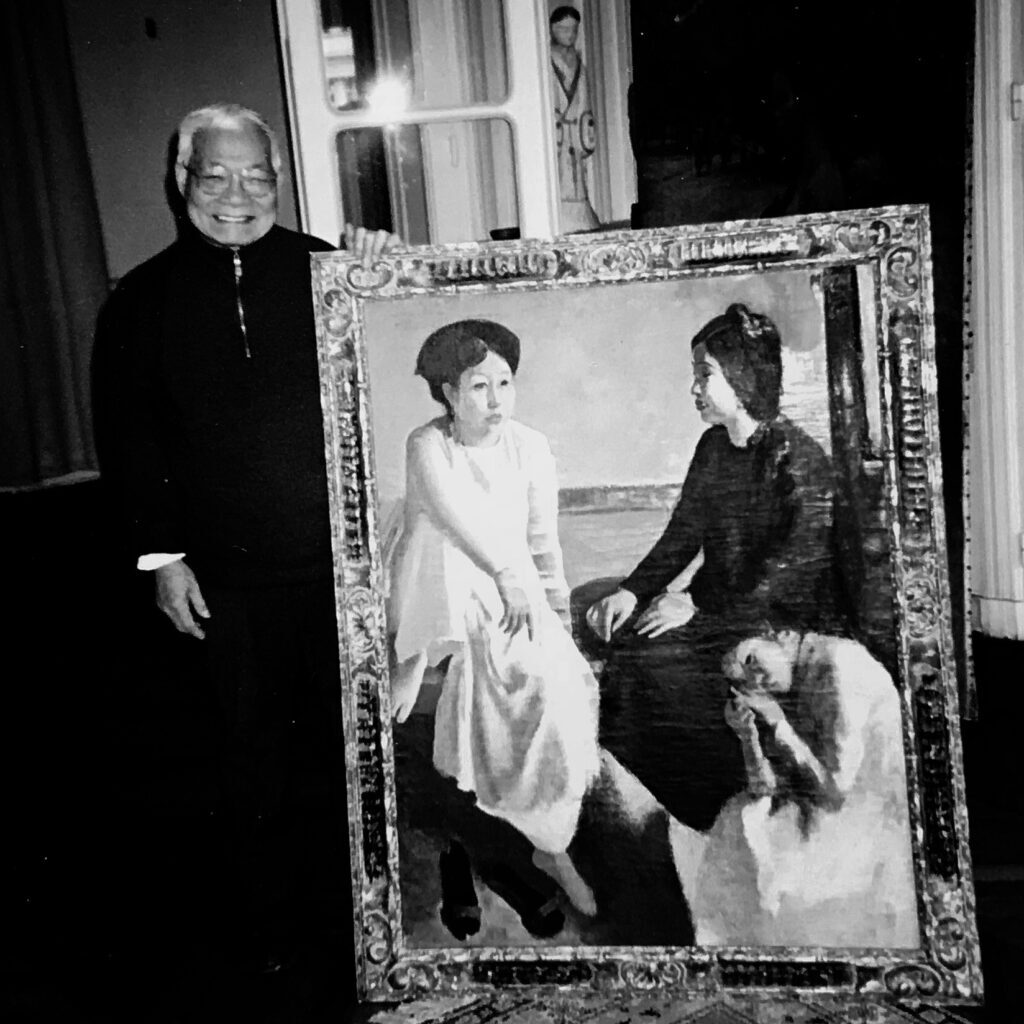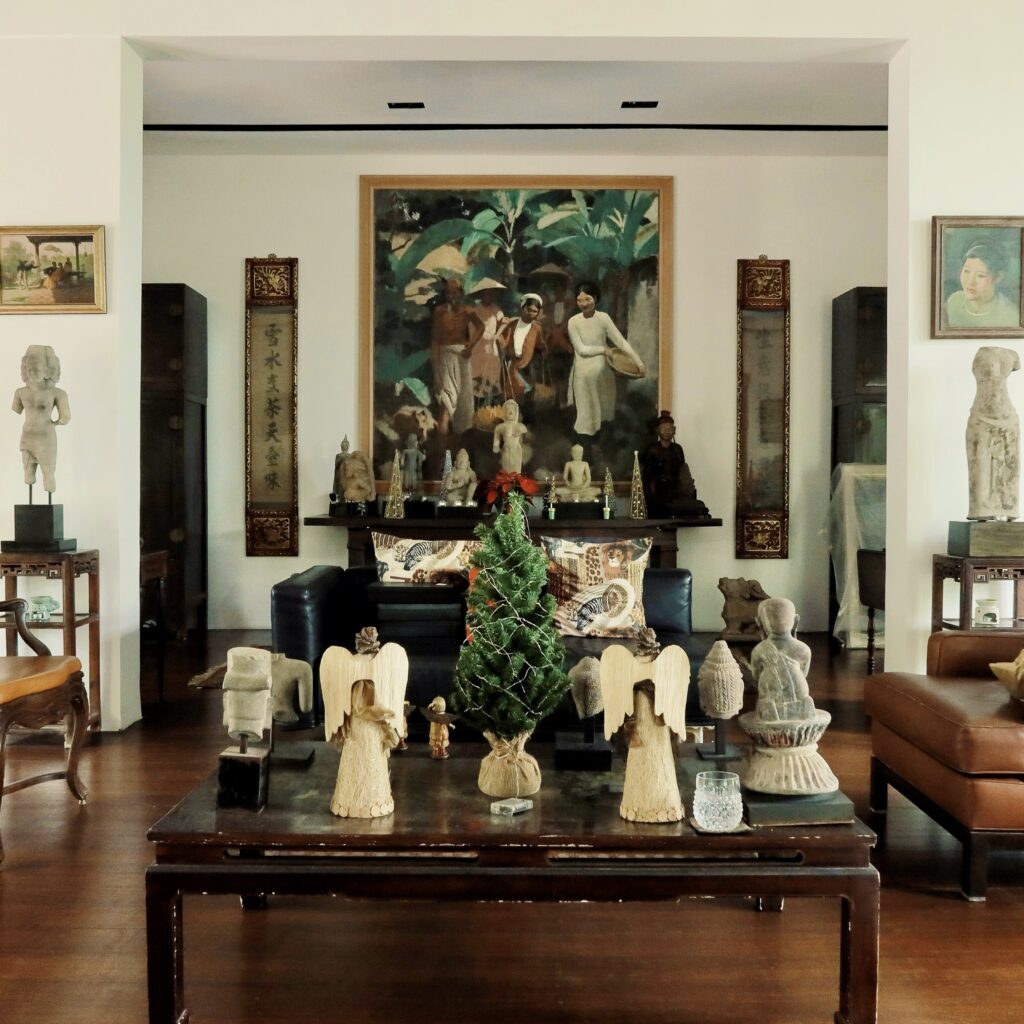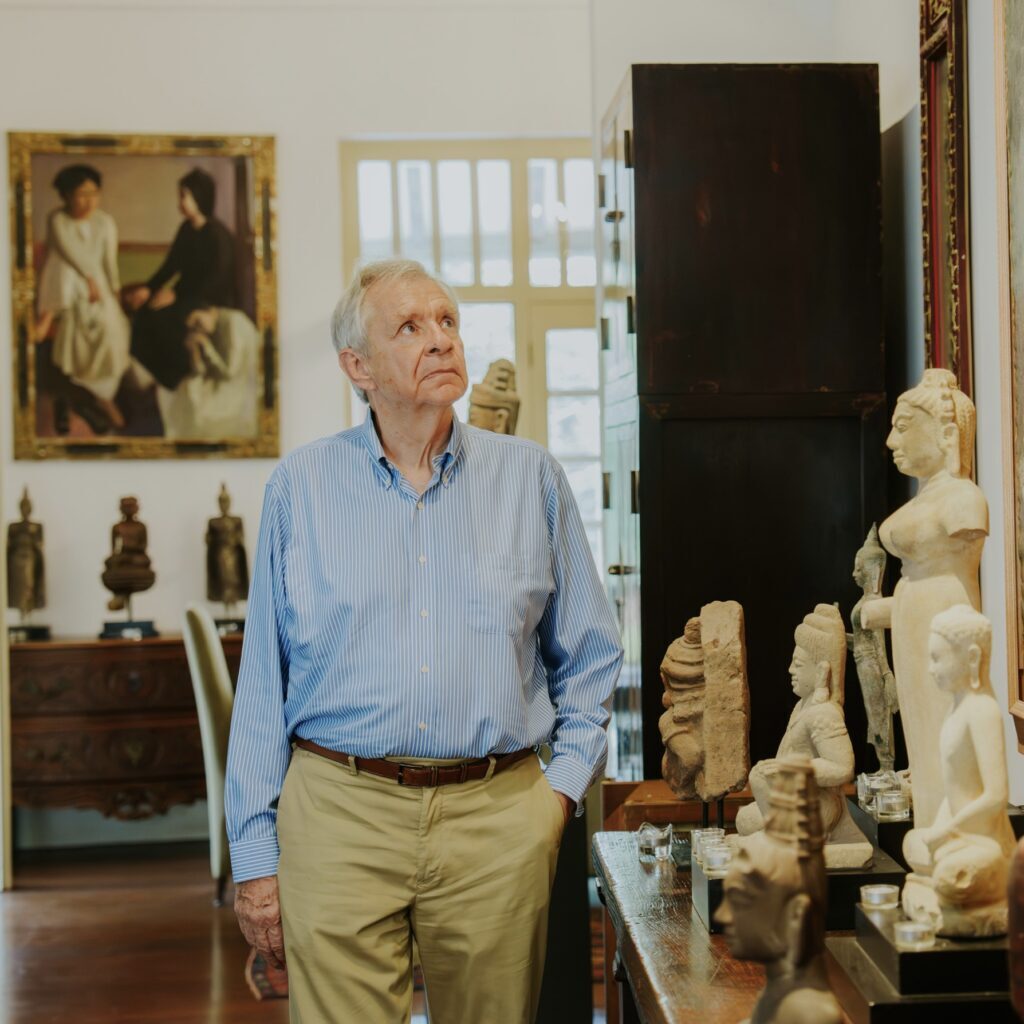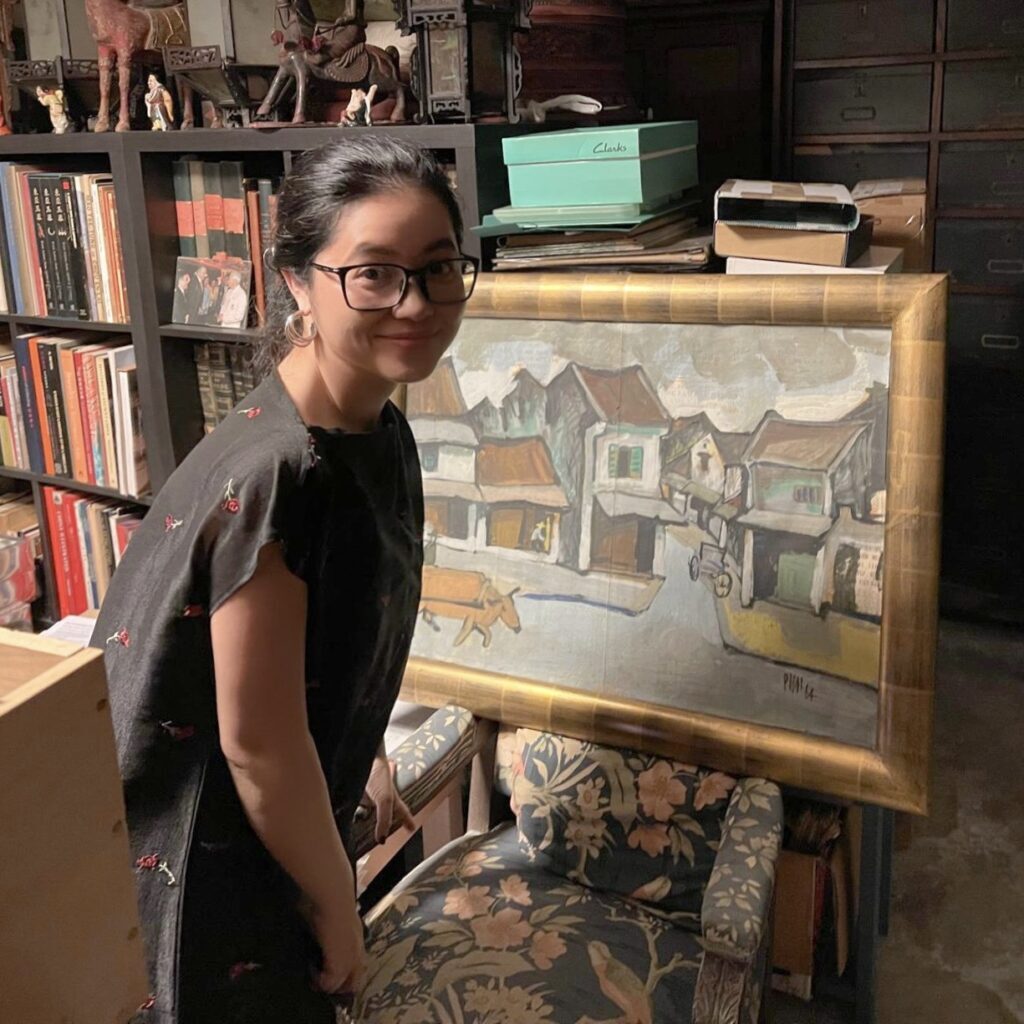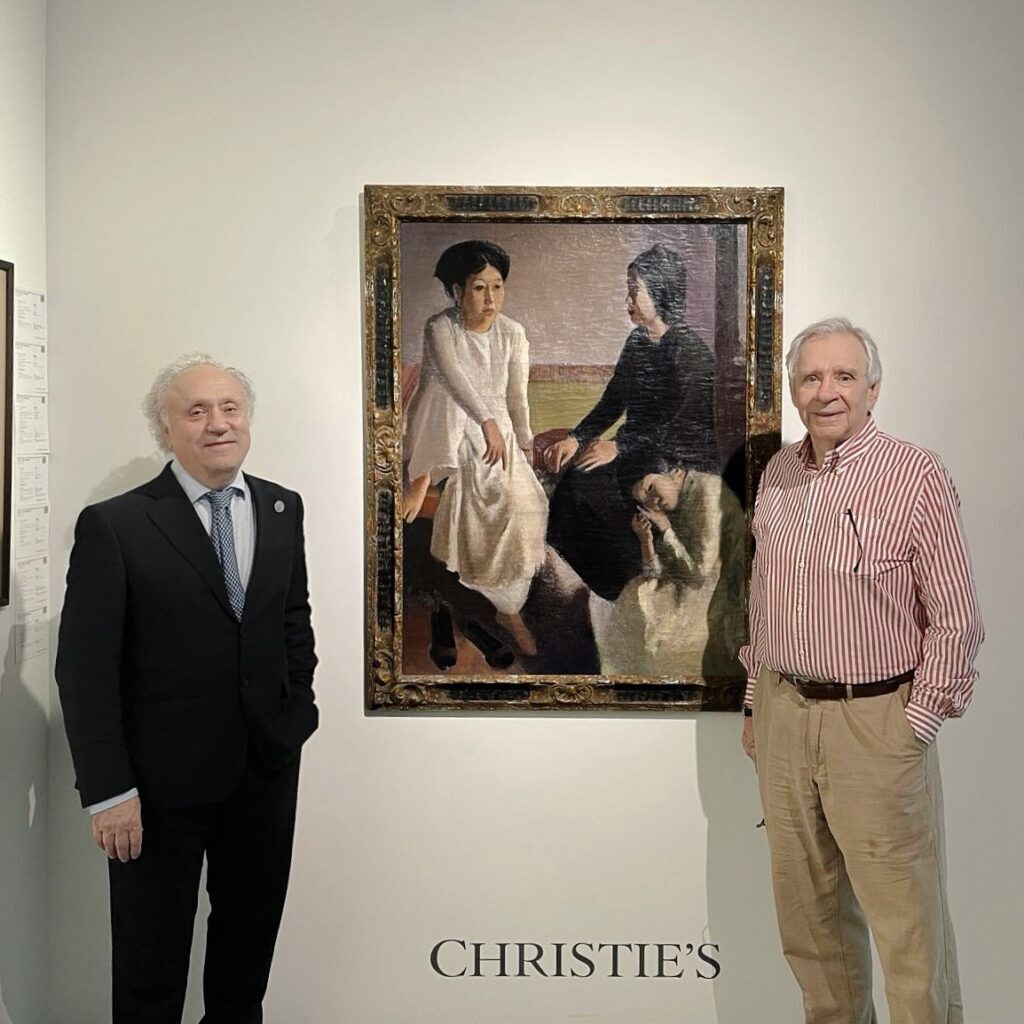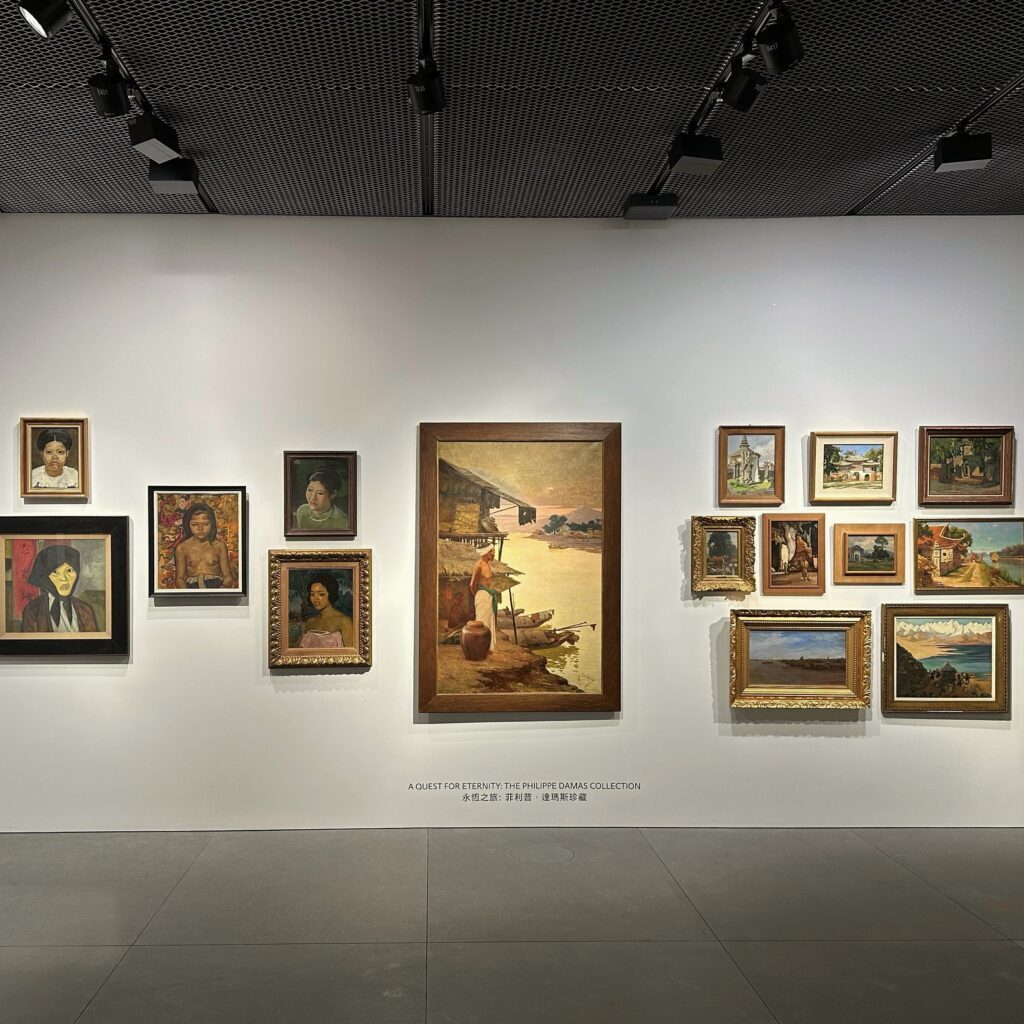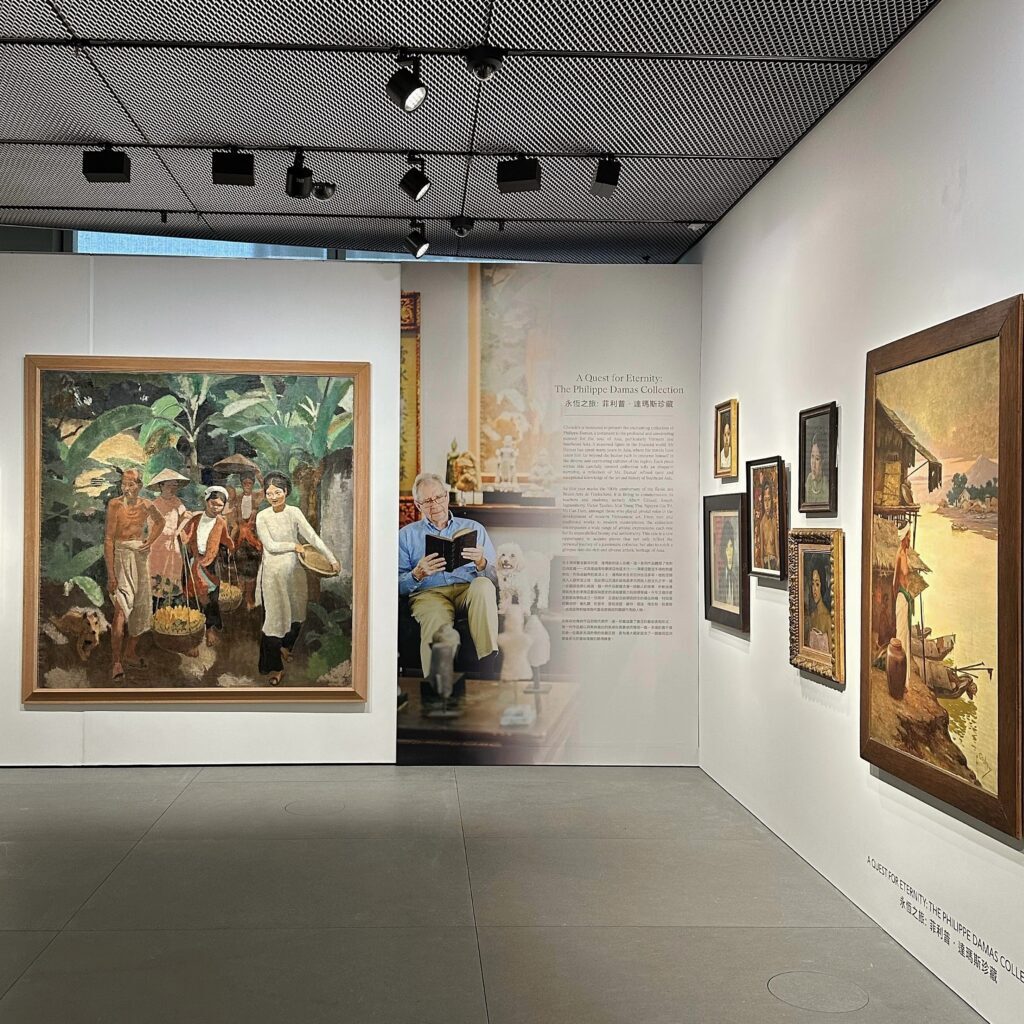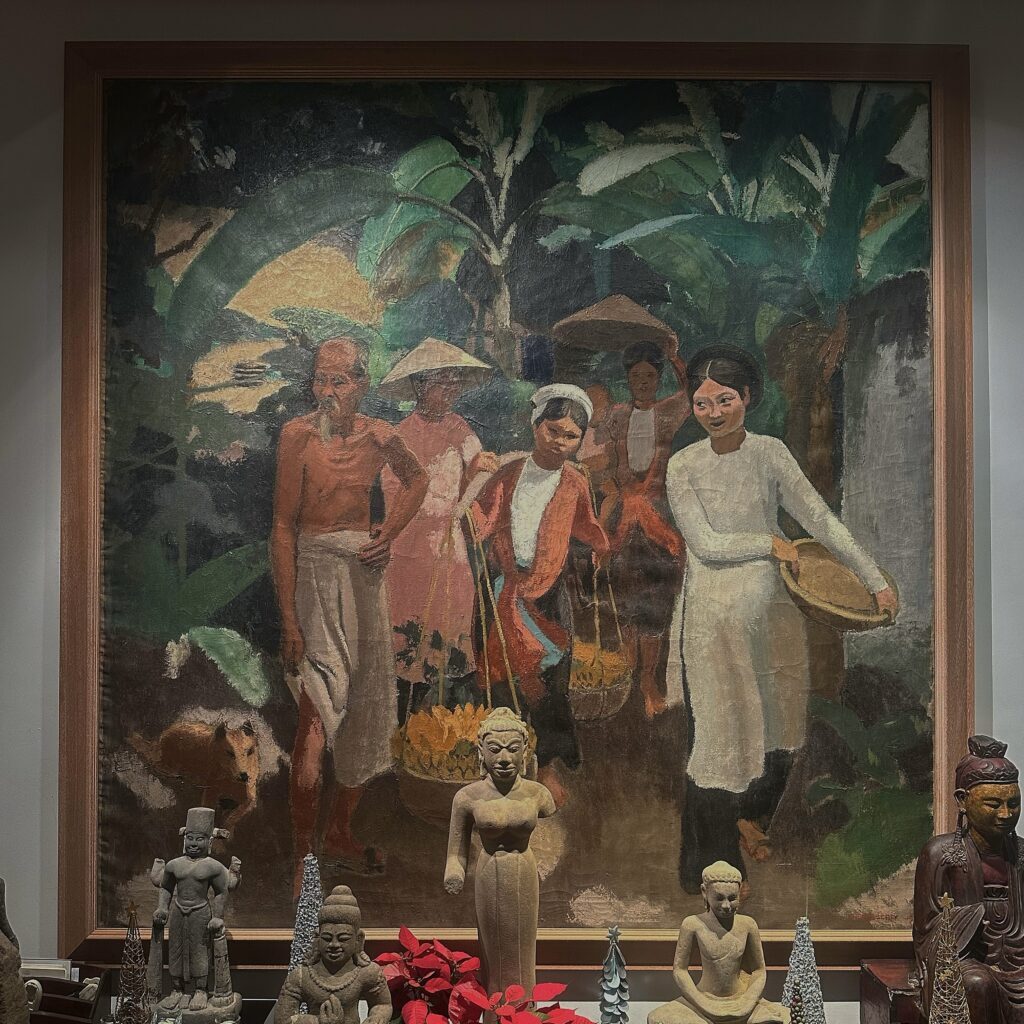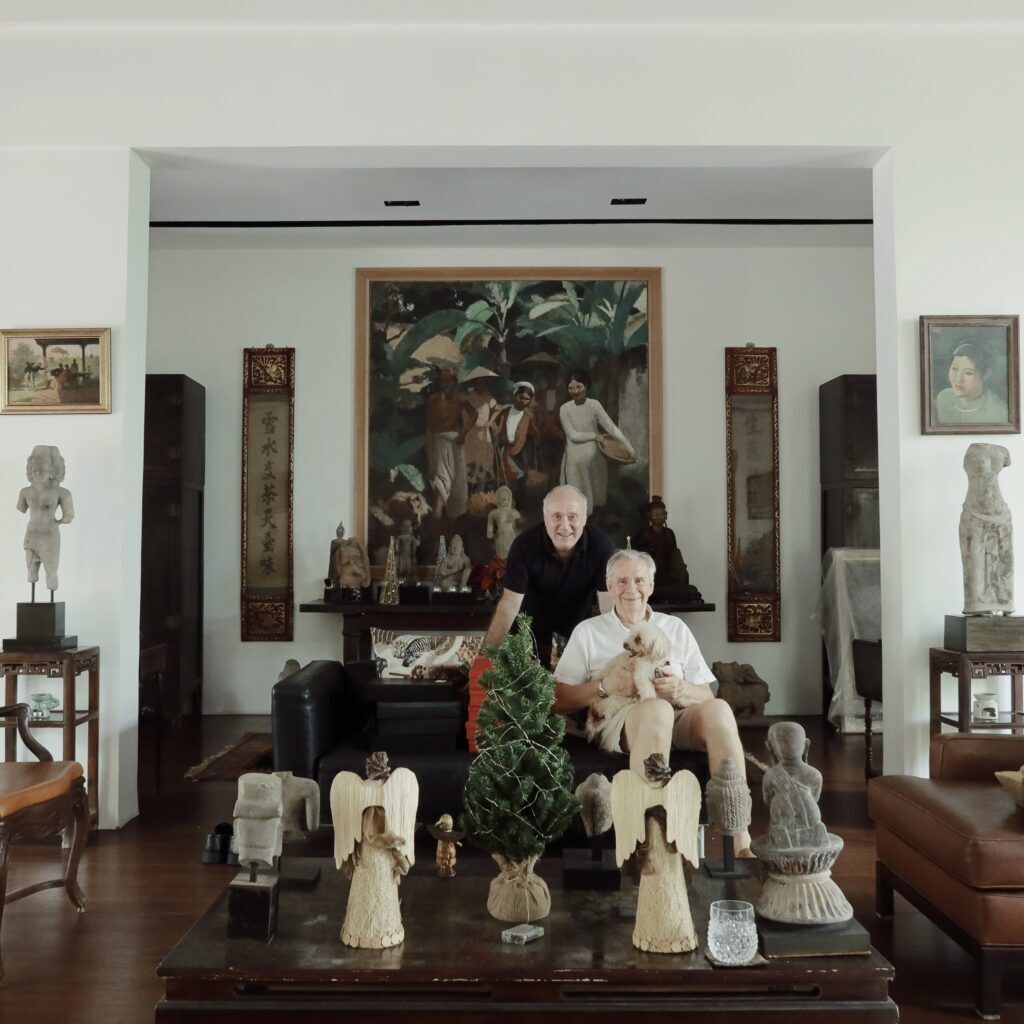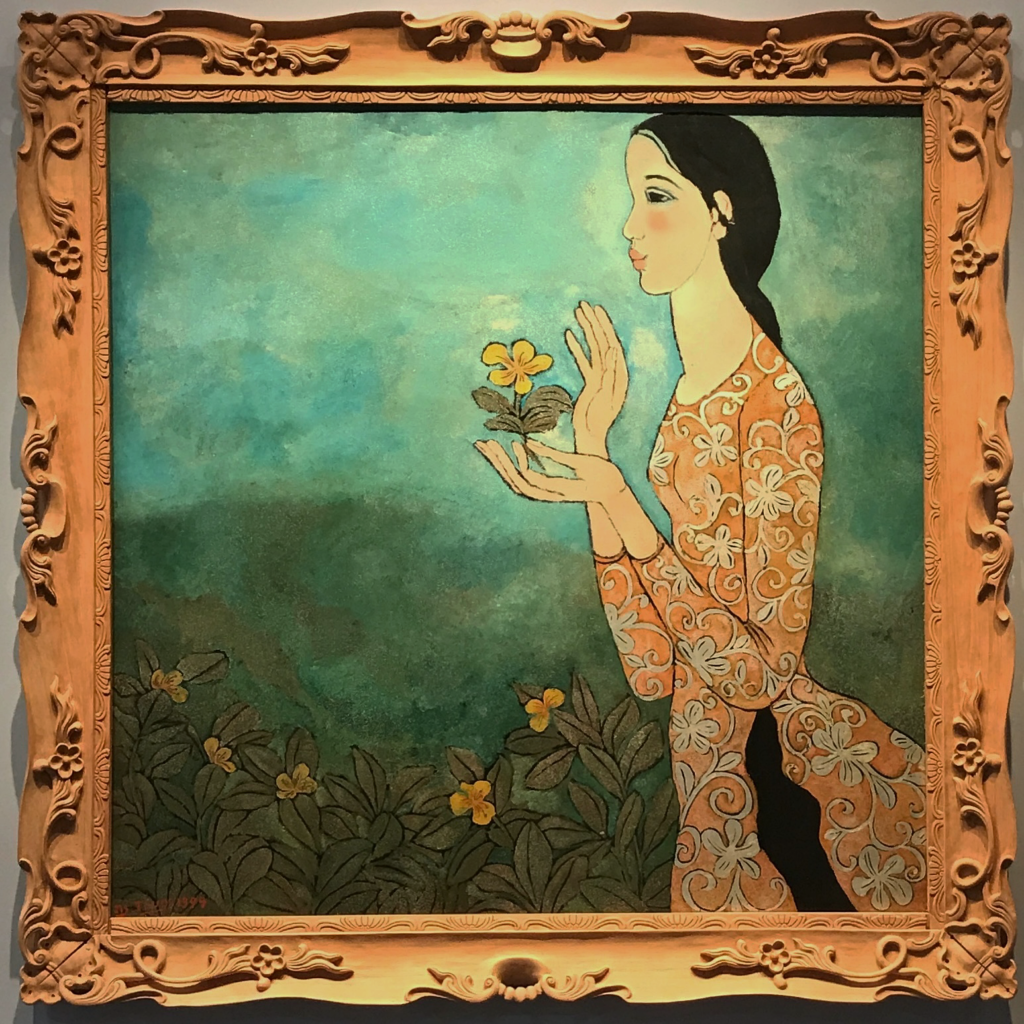
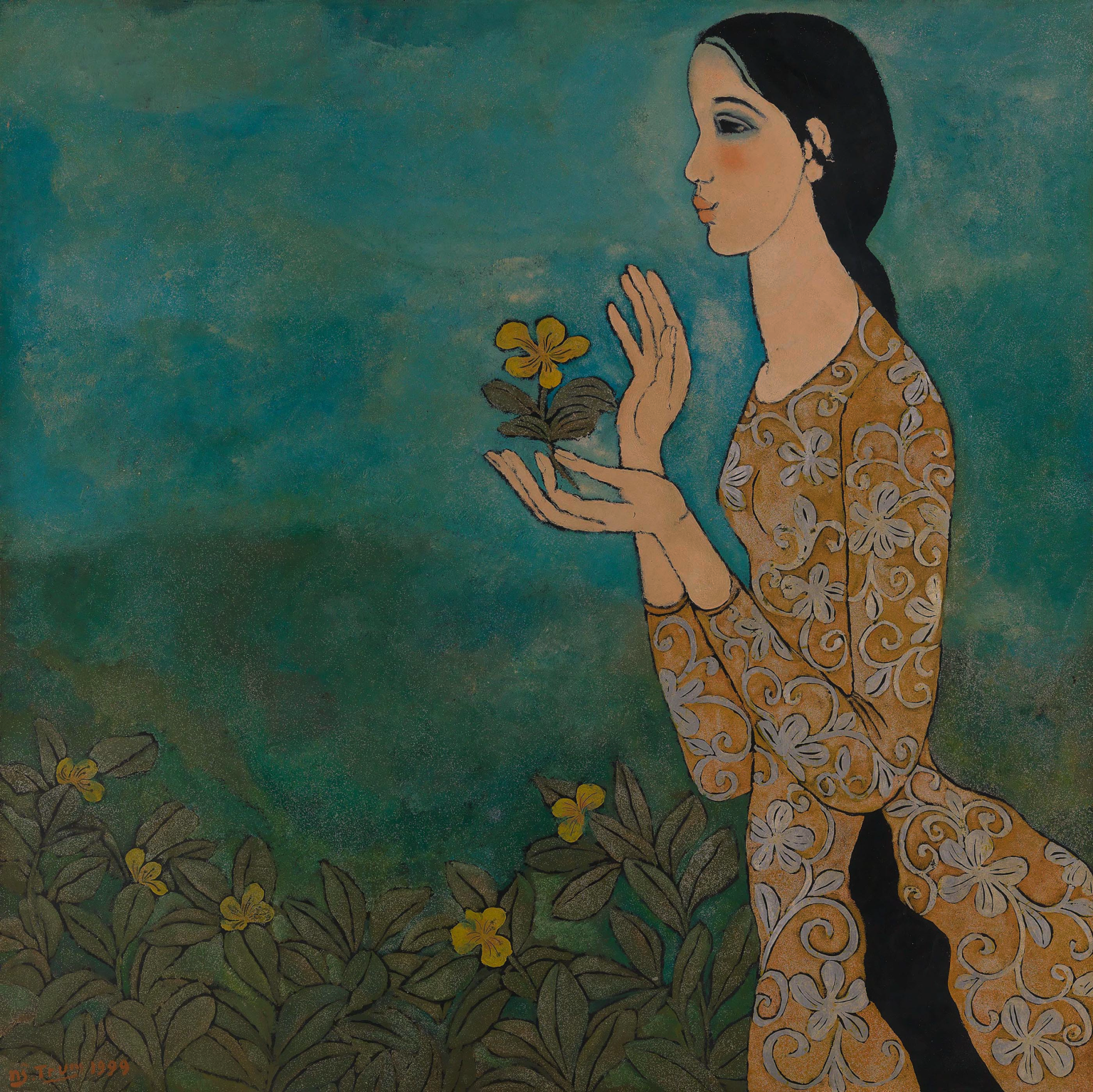
Nguyen Trung (Vietnam, B. 1940)
Lady in Ao Dai with a Ngoc Anh Flower in Her Hands
signed and dated 'ng. Trung 1999' (lower left)
lacquer on panel
100 x 100 cm. (39 3/8 x 39 3/8 in.)
Painted in 1999
Provenance
Acquired directly from the artist
Collection of Boi Tran Garden, Hue, Vietnam
Christie's Hong Kong, 26 November 2017
Price Realised HKD 200,000 at Christie's Hong Kong, 26 November 2017
Nguyen Trung's Lady in Ao Dai with a Ngoc Anh Flower in Her Hands presented at Boi Tran Garden and Christie's (from left to right)
The history of 20th Century Vietnamese painting is mostly described with reference to the fundamental and important influence of the Hanoi School of Fine Arts, created in 1924.
With the inception of the school of fine arts, the artists followed one or two trends forming two groups of painters that marked their time by their talent as artists and also by their choice as men:
The first group were those who decided to conquer the West, mostly France and Paris such as Le Pho, Vu Cao Dam and Mai Thu and, secondly, those who decided to remain in the native country, such as Nguyen Phanh Chan and Nguyen Gia Tri who paid homage to their place of birth.
It is essential in the understanding of Vietnamese painting and to appreciate that both have the same quest of beauty but, one could be considered dynamic, while the other is static and is rarely talked about. Everything flows from this double movement which, as everyone knows, gives birth to important artists who are well known internationally today.
However, the theoretical vision must be completed and undeniably the Southern school of painting, shows some very definite particularities.
One of the major and southern artist, Nguyen Trung (born in 1940 in Soc Trang, near the Mekong Delta) is a member of this Southern school and, as all the other members, he was mainly trained at the Higher School of Gia Dinh (near Saigon where he graduated in 1962).
After the war and the subsequent reunification of the country in 1975, a 'new' official art doctrine of socialist-realism would replace and impose itself in the South. In this doctrine, art had to be close to the people, had to testify to everyday realities, had to valorise its courage during the war and had to praise the achievements of reconstruction and finally, the artist had to paint the sitter as a hero, a soldier and a worker.
Nguyen Trung did not follow nor did the majority of the southern painters, this new trend, and would wait for the doi moi (open door policy in 1986) to get his work better recognized through his abstract paintings, and also via the representation of women in a world where men seem to, at least, be visually absent.
The immense talent can be observed in the representation of this distant but beautiful Vietnamese woman. She seems to evaporate in this environment punctuated by a simple little flower, its freshness, with which she is so connected. Dressed in an ao dai, this elegant and distinguished lady sits regal, like a queen and we wonder if she is taking the flower; or if she herself is taken by the flower.
The flowers appear everywhere from the ground and are seen in her dress; with the final touch of the flower she delicately holds with one hand and protects with her other, symbolism that nothing can last for ever but the future is still ever present with hope and beauty.
This painting is a display of perfect mastery of the very technical and difficult work on lacquer: the very slow process of creation that can take months to complete, explains which such a painting remains rare in Nguyen Trung's body of work, and is testament to the exceptional beauty of his art.
Jean-François Hubert
Senior Expert, Vietnamese Art

